South Georgia on my mind
At 4.30am on 4th December I went on deck, expecting to see a solar eclipse. The sky was clear with a steel-cold wind and indigo sea, and there seemed to be no sign of anything different about the sun. Instead, there was South Georgia, close up, a range of sharp edged mountains and glaciers. I ran back to my cabin to pick up a sketchbook, throwing paint on the page in excitement as the ship was moving fast and the scene before me changing.

South Georgia has always been on my island wish list. It’s a remote, inhospitable heap of mountains and ice on the edge of the Southern Ocean. There are no towns, roads or airport, yet there is a fabulous museum, with a UK postcode (SIQQ 1ZZ) and its been a British Overseas Territory since 1775 when Captain Cook landed and named it Georgia after King George. Now a thriving conservation area, it’s home to thousands of fur seals, king penguins and albatross, who are able to breed there safely thanks to strict safeguarding and the elimination of rats. But it has a human past that’s a mix of dark and heroic. Most people know of Shackleton’s incredible journey from Elephant Island and his trek across the glaciers and mountains, but in the first half of the 20th century, South Georgia was a focus for the whaling industry with 7 whale processing factories. At Grytviken alone, 175,000 whales were processed between 1905 and 1965 when it became unprofitable – there were simply no whales left to catch. You can wander around the remains of the whaling factory at Grytviken now, amongst rusting machinery, blubber tanks and ships pulled up on the beach, harpoons pointing skywards. Whalebones litter the shoreline and there are seals everywhere, dozing or trying to protect their young from hungry skuas. After a while you get used to the sickly-sweet smell of the seals and the barking call that echoes round the steep sided bay.

Wandering amongst the ruins with my sketchbook after attending the ship’s memorial service to Shackleton, I met a sculptor. In this place so far removed from the familiar, this seemed like a perfectly reasonable thing to happen. Michael Visocchi has been commissioned to create something striking and informative in the empty flensing area, where the whales were pulled up onto the shore to be skinned. Find out more about Michael’s project ‘Commensalis’ on the South Georgia Heritage Trust’s website (https://www.sght.org/commission-grytviken-whaling-station-south-georgia/ ) . We spent an inspirational hour or so drinking tea in the museum kitchen with Jayne, the curator, talking about what we were doing there and the power of art to nourish imagination.

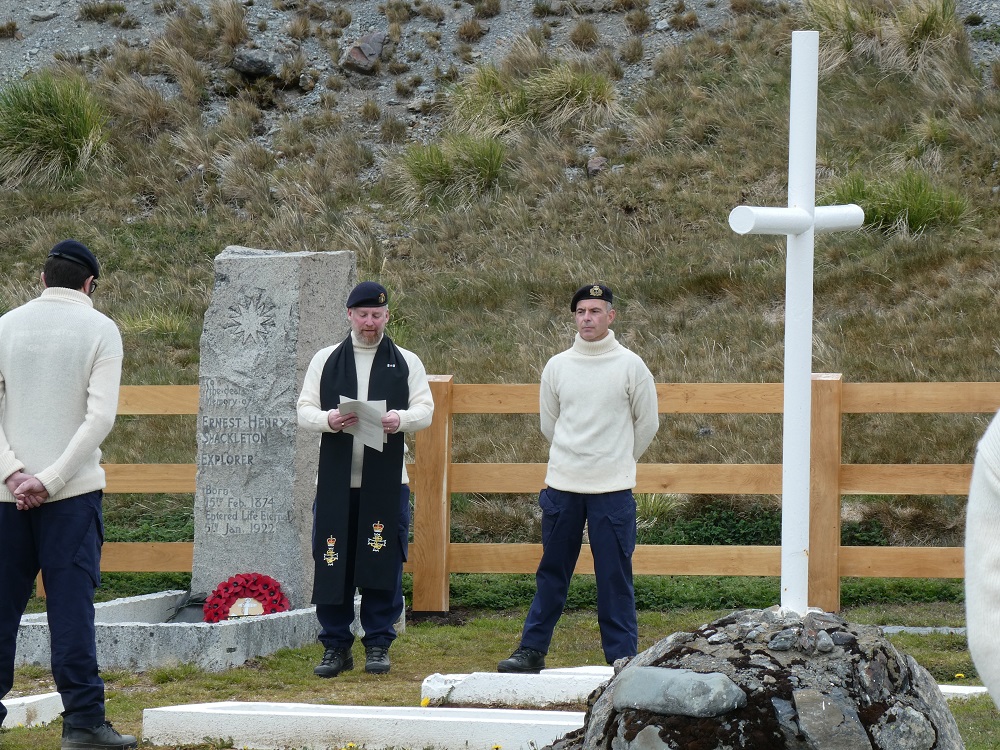
Chaplain Michael Chatfield (left) and Captain Michael Wood (right)
The wrecks and ruins at Grytviken are a silent reminder of the horror of an industry that brought several whale species to the brink of extinction, but it’s good to keep it in context; a whale in those times was thought of as a particularly large and very useful fish whose body provided a huge range of oils and materials for consumer goods. Whaling was both the oil and plastic industry of the day. The sea was considered an abundant provider and it wasn’t until whales became hard to find that attitudes had to change. We can look back at the whaling industry in disgust from the enlightened viewpoint of our conservation-aware 21st century, but it doesn’t do to be too smug; we may have saved the whales but we’re now filling the oceans with plastic and using factory ships to scrape the seas dry of fish. Future generations just seem to be differently wise and differently stupid to those in the past.
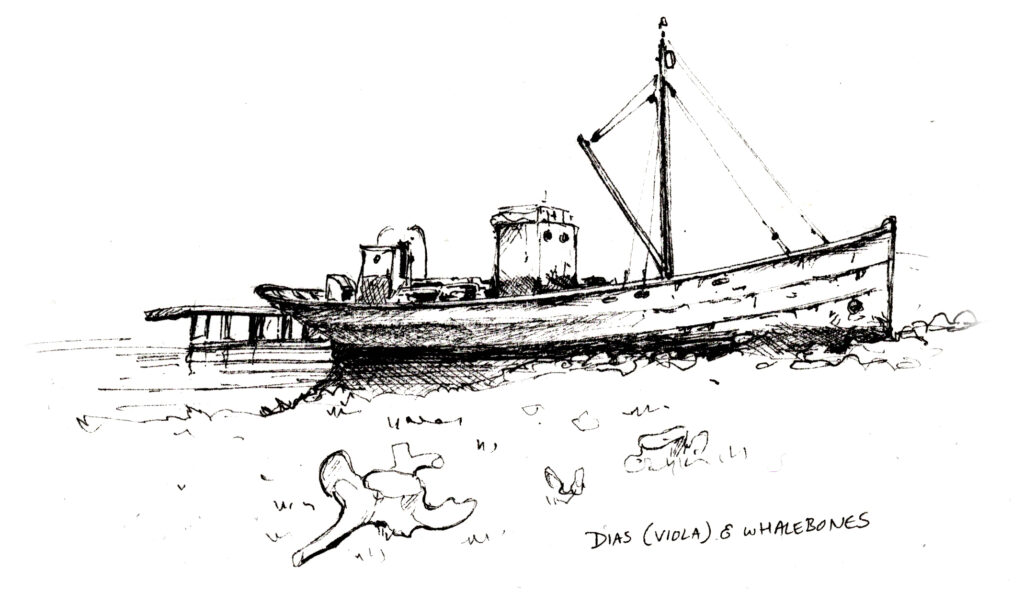
Our first visitor on board HMS Proctector when we arrived was Vicky Foster, the Government Officer of South Georgia and South Sandwich Islands. As well as looking after the island and making sure all visiting ships conform to strict biosecurity procedures, she is also a marine biologist and fisheries specialist. With hard hat and hi vis jacket on she was on the quayside taking the ship’s lines as we came alongside; later, she was postmistress when we visited the post office (South Georgia stamps are popular and you can send a postcard, though it’s likely to be your own ship that carries the mail!). Later, she and her colleague Josh came on board for dinner with the Captain and some of the officers. I was lucky enough to be invited too and it was fascinating to hear about life on the island, with flimsy wifi, lack of fresh food and harsh winters when the scientists and cruise ships have gone and there are only about ten staff left. But Vicky’s enthusiasm for her work and the conservation success stories on the island were inspirational; it was one of the most memorable supper parties I’ve ever been to.
Our ship was there to make itself useful; one task was to deliver the covid boosters to staff on the island, and Vicky also needed help transporting building materials round to repair some buildings in the next bay. With no land transport and a steep mountain or two in the way, this could only be done by sea, but it did mean that we left earlier than planned so the private visit I’d arranged to the museum for the afternoon with my sketchbook didn’t happen. There’s nothing for it, I’ll have to find a way to get back there. If you happen to know of a ship heading that way that needs an artist, let me know!
There is much to learn from songs about changing attitudes. There are some great whaling songs out there, including the recently popular ‘Wellerman’. This is a verse from ‘Blood Red Roses’ :
Ahoy me boys there she blows, a monster of the deep
Lower the boats away me lads she must be sixty feet
Steady boys, now hold your nerve she’s a killer of a whale
She could sink this ship with just one flick of her mighty, mighty tail
Times change. Here’s a verse and chorus from ‘The last of the Great Whales’ by Andy Barnes:
My soul has been torn from me and I am bleeding
My heart it has been ripped and I am crying
As the beauty around me fails and I am screaming
I am the last of the great whales and I am dying
This morning the sun did rise, in a crimson north sky
The ice was the colour of blood and I heard the wind sigh
I rose up to take a breath, it was my last one
From a gun came the roar of death and now I’m undone
I’ve gone on far too long with this blog, you can see that South Georgia got to me! To end on a positive note, fur seals, which were also hunted to the brink of extinction, have now more than recovered their numbers on South Georgia, which is also now a safe nesting area for albatross and a host of other birds thanks to its enlightened approach to conservation. It’s good to have been to a place where the future looks so much brighter than its past – let’s hope that it’s able to stay that way.
Find out more:
https://www.spri.cam.ac.uk/ Scott Polar Research Institute, whose ‘Friends’ enabled my trip to happen
www.sgmuseum.gs South Georgia Museum
www.sght.org South Georgia Heritage Trust


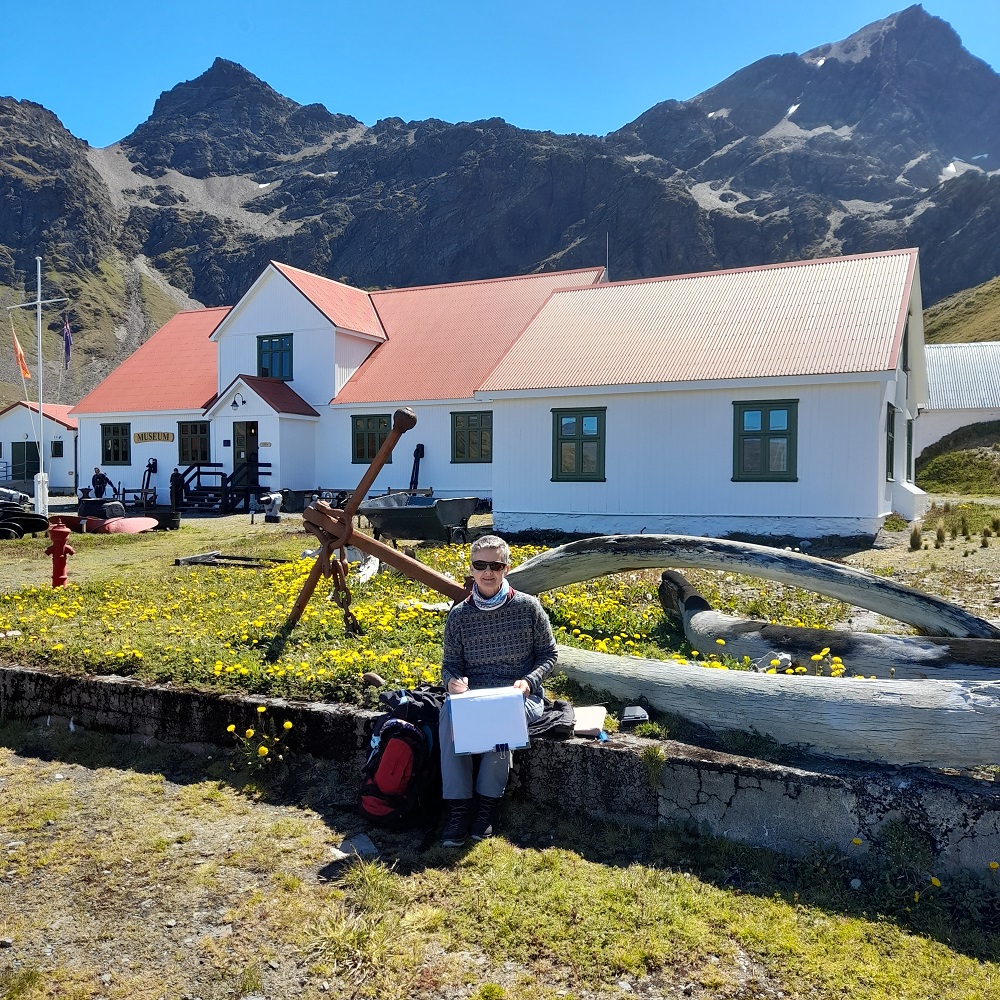
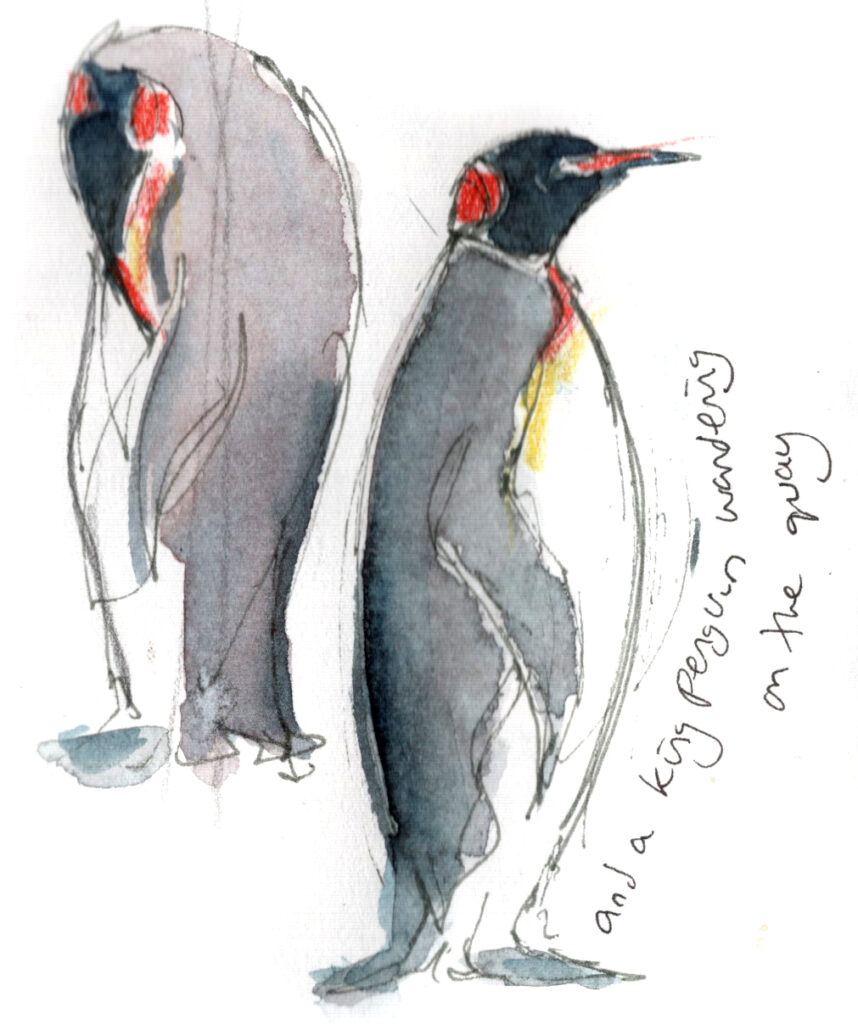
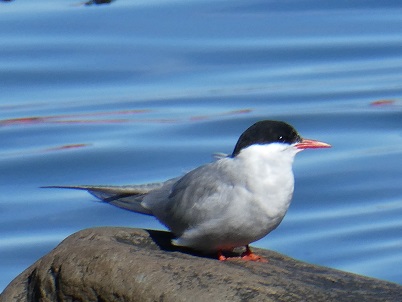
It’s more than likely that I will never go there so it’s remarkable to read your blog, see the colours in your snaps and sketches and hear about the remarkable people who are living and working there.
Loved reading this and agree completely with the power of art. Photographs can be art too, but your sketch of the sailors standing at ease in the cemetery is so much more powerful than the photo. Looking forward to the next instalment
This really brings the shores of South Georgia alive, thankyou, Claudia! Looking forward to the next instalments.
Cracking good blog/travelogue. Hope that lovely old boat gets restored.
Great post – thank you.
Far from being too long, I could have devoured twice as much of your fascinating blog, Claudia! Looking forward to the next instalment.
P.S. did you know there was a picture in The Times newspaper of the Shackleton Memorial Service?